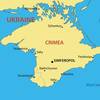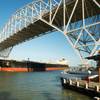Maritime Experts to Debate Coastal Shipping, IWT Prospects
The opportunities and challenges faced by India’s coastal shipping industry as the country strives for a more optimal modal mix among various modes of transport will top the agenda at the upcoming 3rd edition of Coastal Shipping and IWT Business Forum 2015 which takes place at the Marriott Hotel, Kochi, Kerala on 7 August.
The Business Forum comes in the backdrop of a renewed thrust given to the fledgling sector by the Narendra Modi government that came to power last year.
Investor-friendly policies are being framed by the shipping ministry led by Nitin Gadkari to revive coastal shipping. The government has taken the bold step to incentivize shippers for using coastal shipping and IWT with the aim of shifting cargo away from road and rail. Ports have been asked to provide priority berthing for coastal vessels at no extra cost both at major ports and privately-run ports including the container terminals operating at these ports. These are indications of good days ahead for the industry. The government is also seeking private participation through PPP route for development of dedicated berths with efficient cargo handling systems and warehousing facilities.
“How soon will these measures bear fruit is the question that needs to be answered,” says K Mohandas, Chairman of the Business Forum, organized by India Seatrade. Mohandas is a former union shipping secretary. How far do these policies impact ship-owners in garnering more cargo volumes over the next few years? How will the government’s proposed incentive scheme for shippers work in favour of modal shift towards coastal shipping? What more is required at policy level to boost volumes in coastal shipping?
The maritime community has been voicing concerns over lack of dedicated infrastructure for coastal vessels. While major ports will have designated berths in some time, issues such as draft, first and last-mile connectivity by rail and road, handling facilities and sufficient modern tonnage to move cargoes need to be addressed. China, for instance, moves one billion tons of cargo by 12,000 coastal vessels, while India has only 140 such vessels to carry 150 million tons of commodities or 6 per cent of overall cargo movement.
There is a dire need to address the concerns of users to realise the vision of promoting coastal shipping. Reliability of service, frequency, administrative requirements and a comprehensive multimodal logistics solution will ensure gradual shift from the conventional modes of transport to coastal shipping. Given the vast spread of our population across the country with uneven transportation network, an extensive connectivity roadmap has to be chalked out by the authorities concerned by integrating rail, road and coastal shipping.
There is also a need to familiarise and sensitise the EXIM community on the immense potential of coastal shipping in providing cost-effective and customised solutions for cargo movement. An aggressive campaign and familiarisation drive on coastal shipping and inland waterways by way of projecting success stories can build momentum, both within the government and the maritime community, on the benefits of this environment-friendly mode of transport which has made great strides in countries with long coastline and network of waterways.
The Forum assumes further significance with the government taking the first few steps towards the ambitious Sagarmala project.
The Sagarmala project seeks to achieve the broad objectives of enhancing the capacity of major and non-major ports and modernizing them to make them efficient, thereby enabling them to become drivers of port-led economic development, optimizing the use of existing and future transport assets and developing new lines/linkages for transport (including roads, rail, inland waterways and coastal routes), setting-up of logistics hubs, and establishment of industries and manufacturing centres to be served by ports in EXIM and domestic trade. In addition to strengthening port and evacuation infrastructure, it also aims at simplifying procedures used at ports for cargo movement and promotes usage of electronic channels for information exchange leading to quick, efficient, hassle-free and seamless cargo movement.
Improvement of operational efficiency of existing ports, which is an objective of the Sagarmala initiative, shall be done by undertaking business process re-engineering to simplify processes and procedures in addition to modernizing and upgrading the existing infrastructure and improved mechanisation. Increased use of information technology and automation to ensure paperless and seamless transactions will be an important area for intervention. Under the Sagarmala Project, the use of coastal shipping and IWT are proposed to be enhanced through a mix of infrastructure enhancement and policy initiatives.










